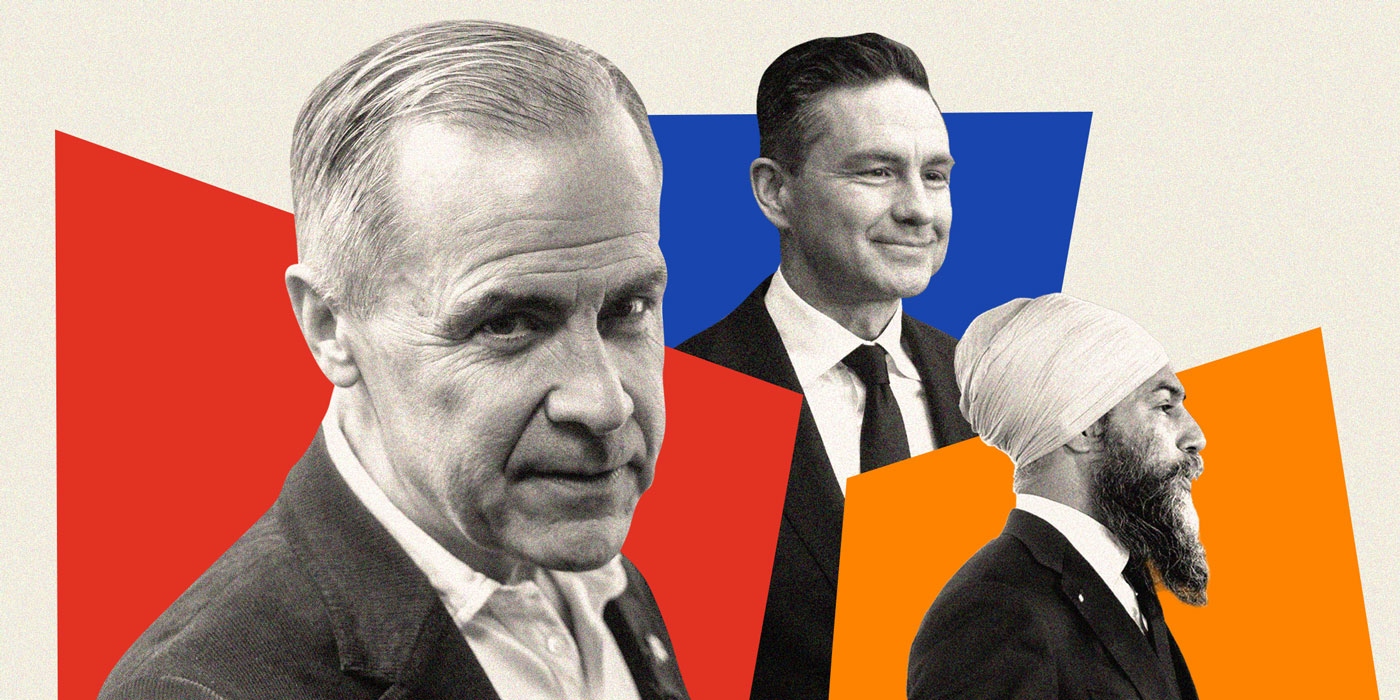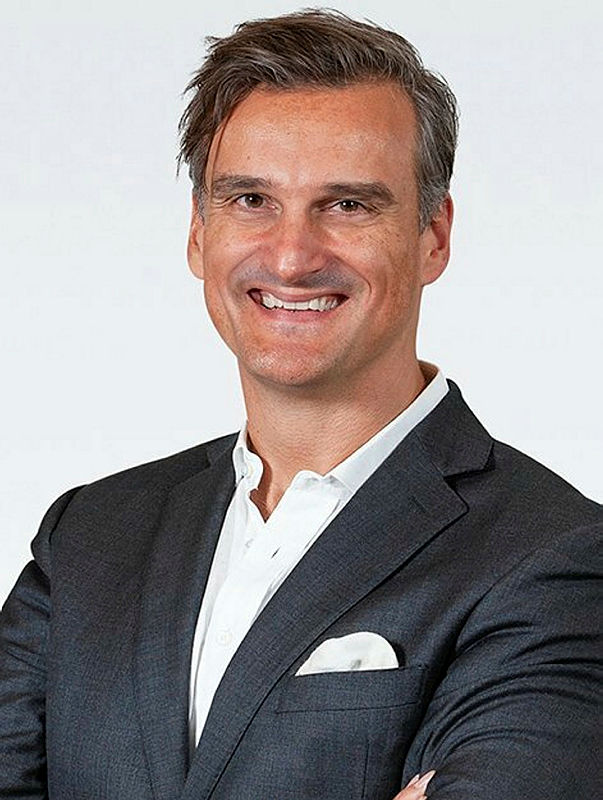Liberals’ small-donor army slays Conservatives’ $28M fundraising behemoth, but Tory donors not likely to surrender, say strategists

The Conservative Party’s unprecedented fundraising haul in the first 90 days of 2025—raising more than two-thirds of last year’s historic total in a single quarter—isn’t expected to fall off despite the party’s election loss as loyal supporters’ motivation to “finish the job” in the next election isn’t likely to abate, says former Tory communications strategist Yaroslav Baran.
Yet while the Conservative fundraising behemoth is an entirely different species from its political rivals, a small army of Liberal donors coalescing around new Prime Minister Mark Carney (Nepean, Ont.) may have finally solved its “chicken-and-the-egg” fundraising problem, says Liberal strategist Hunter Knifton.
In the first quarter of 2025—Jan. 1 to March 31—the Conservative Party raised nearly $28.4-million, averaging $191 per donation from 148,676 individual contributions, nearly triple the $10.7-million it raised during the same period last year. Those totals are also roughly two-thirds of the party’s 2024 fundraising totals, in both dollars and total contributions, when it raised more than $41.7-million from 211,255 individual contributions, and are higher than any other non-election year.
While the Tory total dwarfs not only its previous records set since choosing Pierre Poilievre as party leader in September 2022, it also more than doubles the just-as-historically impressive $13.7-million the Liberals received. However, that Liberal total with its 156,489 individual contributions last quarter is its own party record. In the first quarter of 2025, the Grits raised just slightly less than the annual total for any previous year.
The New Democrats only marginally increased their first-quarter total compared to previous years, raising $1.8-million from 37,538 contributions, and roughly half of the Liberals’ average individual contribution, at $49 to the Grits’ $87.

The Bloc Québécois had the highest average contribution, roughly $213 from 3,590 individual donations, for a first-quarter total of $763,834. The Green Party’s totals were slightly higher in all categories, with $818,272 from 5,181 individual contributions, averaging $158 per donation. Finally, the People’s Party of Canada received $292,594 from 2,487 contributions, averaging $118 per donation.
In an interview with The Hill Times, Baran said that while fundraising always increases during “high-engagement events” like a general election or a party leadership contest, he doesn’t expect to see a significant drop-off now that the ballots have been counted.
“I’ll be surprised if the numbers don’t go down as a natural phenomenon, but I don’t think we’ll see disenchantment among party donors,” Baran said. “Those people believed in the message enough to give, and they might be convinced we need to finish the job and make sure there’s a war chest given the uncertainty of a minority Parliament.”
Baran explained that the Conservatives’ total fundraising and total individual contributions reflect the “resonance” of their messaging under Poilievre. He noted that in a single quarter, the party had received more individual donations than in any year since 2021 when it received 160,802 individual donations.
“Clearly, there was something in his message that they liked and were tuned into,” Baran said. “It’s not just the total dollars raised, it’s also the huge number of individual [donations] that’s especially noteworthy.”
The Conservatives received roughly $7.76-million from 115,762 smaller donations of $200 or less—77 per cent of donations—averaging $67 per contribution. In comparison, the Liberals received just shy of half of their fundraising total—over $6.83-million—from 144,732 smaller donations, comprising 92 per cent of giving, for an average of $47 per contribution.
Knifton told The Hill Times that while the Conservatives’ fundraising numbers are indeed “massive and super impressive,” it may not have benefited them to a comparable extent during the election, when all parties are constrained under the same spending limits.

During the 45th general election campaign, under the newly redistributed 343 ridings, the spending limit was set at roughly $35.8-million for the Liberals, Conservatives, and New Democrat parties, up from just over $30-million during the last election under the previous 338-riding distribution.
By the end of the first nine days of the campaign, the Conservatives had raised nearly 80 per cent of that expense limit, averaging roughly $315,530 per day in donations. The Liberals’ fundraising total represents 38 per cent of the expense limit, averaging $151,886 daily. Projected over the next 28 days of the election, the Conservatives would have raised an estimated $9.47-million, compared to the Liberals’ $4.56-million.
“The Conservatives didn’t have much time to spend that money to define Carney before the election, and were probably spending that money in real time as soon as they brought it in, so the effect was probably pretty muted,” Knifton said, adding that the party would at least have pretty full coffers from whatever is left over.
Additionally, while the Liberals’ first-quarter total is less than half of the Conservatives’, compared to the Liberals’ recent record under former party leader Justin Trudeau, Knifton said the Grits’ totals demonstrate an improvement that can’t be understated.
“Having more total contributions than the Conservatives is insanely impressive,” Knifton said. “Considering this quarter is when Trudeau resigned and they had the leadership race … it’s incredible that they could do that with all of those changes, and it just goes to show how successful Carney’s leadership election campaign was at reaching new people and bringing them into this massive tent.”
Additionally, Knifton said he suspects that Carney’s success effectively coaxed former donors who were unsure about donating to Trudeau’s Liberals—particularly older voters with more disposable income—to once again reopen their wallets.
“It’s kind of cracked the chicken-and-the-egg problem,” Knifton said, noting that fundraising success is closely correlated to polling success.
“To improve your polling, you need to buy ads, but to buy those ads, you need money, and people don’t want to donate if you’re down in the polls,” Knifton explained. “People want to support a winner, so when they saw the Liberals going up in the polls, they started donating again.”
But Baran said he doesn’t expect the Liberals’ fundraising numbers to remain the same through the rest of 2025, noting that those donors won’t have the same motivation to continue.

“The Liberals’ numbers reflect the high stakes in the election, but now that they’ve won, they don’t have the same incentive to continue the way Conservatives might,” Baran explained, adding that he still expects the parties’ second-quarter numbers to enjoy a boost from the majority of the writ period.
However, Greg MacEachern, a former Liberal ministerial staffer and vocal critic of the Liberals’ previous lack of results on both messaging and fundraising during Trudeau’s final months as leader, told The Hill Times he suspects many Conservative donors may be experiencing a taste of that frustration.
“If I were a loyal Conservative supporter and fundraiser and saw the vast amount that my party raised compared to the results, I think that would be hard to swallow,” MacEachern said. “You can point to seat gains and everything else, but the reality is, they promised to defeat the Liberals and were expected to win the election with a massive majority, and they did not.”
MacEachern also noted that while the Conservatives massively out-raised the Liberals in the lead-up to the election, the party also massively outspent them on digital advertising, spending more than $2.6-million on Facebook and Instagram ads in the nearly seven months before the election, compared to the Liberals’ $1.1-million. However, during the campaign, the Liberals reversed that trend, spending over $1.3-million more from March 23 to April 27, with a total spend of $4.7-million compared to the Conservatives’ $3.38-million.
“If I were a Conservative donor, I wouldn’t just ask where it spent all that money, but why?”
The Hill Times
First-quarter fundraising comparison, 2015-present
| Conservatives | Liberals | NDP | Greens | Bloc Québécois | People’s Party | |
| Q1 2015 | $6,302,918 | $3,872,930 | $2,266,728 | $670,522 | $87,775 | / |
| Q1 2016 | $5,469,856 | $4,031,043 | $1,351,179 | $451,555 | $96,540 | / |
| Q1 2017 | $5,308,501 | $2,801,233 | $908,892 | $476,153 | $136,402 | / |
| Q1 2018 | $6,010,813 | $3,307,773 | $1,372,760 | $533,326 | $101,234 | / |
| Q1 2019 | $8,010,861 | $3,857,163 | $1,226,869 | $738,279 | $215,421 | / |
| Q1 2020 | $3,811,694 | $2,875,124 | $963,924 | $576,644 | $184,196 | / |
| Q1 2021 | $8,477,435 | $3,545,657 | $1,641,396 | $677,539 | $373,097 | / |
| Q1 2022 | $4,991,683 | $3,230,198 | $1,373,179 | $419,405 | $353,077 | $408,770 |
| Q1 2023 | $8,306,535 | $3,614,224 | $1,260,952 | $400,915 | $322,871 | $296,585 |
| Q1 2024 | $10,697,111 | $3,098,432 | $1,349,484 | $401,000 | $342,998 | $240,026 |
| Q1 2025 | $28,396,760 | $13,669,754 | $1,825,677 | $818,272 | $763,834 | $292,594 |






 LICENSING
LICENSING PODCAST
PODCAST ALERTS
ALERTS













